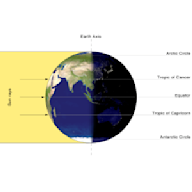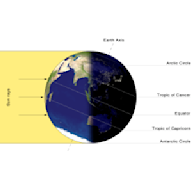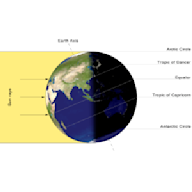Search results
The March equinox [7] [8] or northward equinox [9] is the equinox on the Earth when the subsolar point appears to leave the Southern Hemisphere and cross the celestial equator, heading northward as seen from Earth.
The March equinox is the moment the Sun crosses the celestial equator —an imaginary line in the sky above Earth’s equator— from south to north. This happens on March 19, 20, or 21 every year. 10 facts about the March equinox. Equinox Local Time & Date.
The March equinox – aka the vernal equinox – marks the sun’s crossing above Earth’s equator, moving from south to north. Earth’s tilt on its axis is what causes this northward shift of ...
The equinox in March marks the start of spring in the Northern Hemisphere. ©iStockphoto.com/Karepanov. Equinox & solstice—local time & date. 1. Also Autumnal Equinox. The March equinox is the vernal (spring) equinox in the Northern Hemisphere and the autumnal (fall) equinox in the Southern Hemisphere. 2. First Equinox of the Year.
By Aparna Kher. Many cultures claim March 21 as the date of the March equinox. In reality, the equinox can happen on March 19, 20, or 21. Spring or March equinox? The March equinox is the vernal (spring) equinox in the Northern Hemisphere, but the autumnal (fall) equinox in the Southern Hemisphere. ©bigstockphoto.com/sauletas.
Mar 15, 2017 · In 2024, the vernal equinox occurred on March 19, signaling the start of spring in the Northern Hemisphere (and fall in the Southern Hemisphere). The Earth tilts at an angle of 23.5 degrees...
In the Northern Hemisphere, the March equinox is called the vernal or spring equinox while the September equinox is called the autumnal or fall equinox. In the Southern Hemisphere, the reverse is true. During the year, equinoxes alternate with solstices. Leap years and other factors cause the dates of both events to vary slightly. [12]





